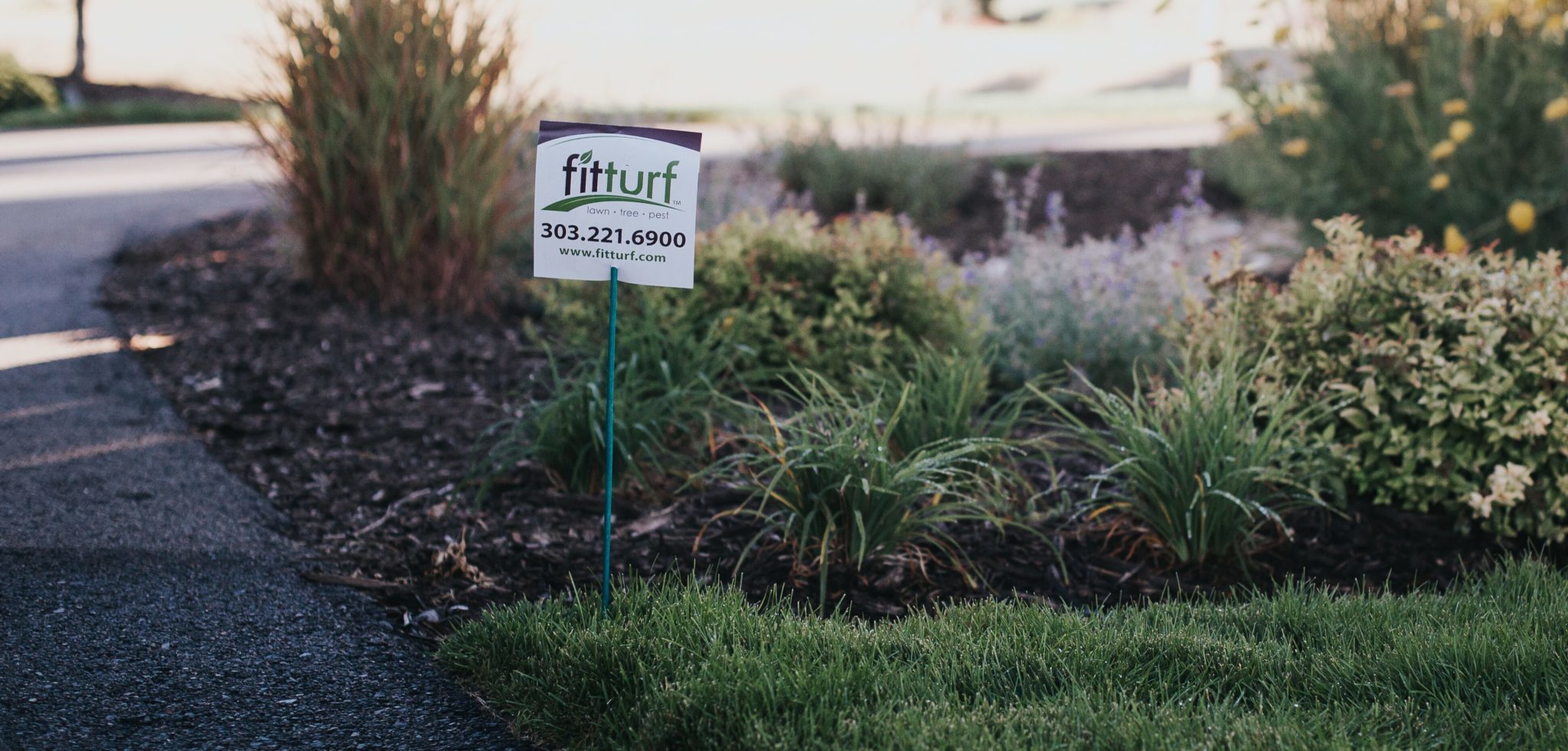Customer Support
303.221.6900How to Plant Grass Seed on Existing Lawns
Your yard takes a beating, day in and day out. It is exposed to the worst of the elements 24/7 and suffers relentless abuse from Mother Nature. It’s little wonder that it isn’t always up to par and may need a little bit of TLC throughout the year.
Over-Seeding: A Quick & Easy Fix
Over-seeding is a relatively quick and easy way to fill any bare or lackluster patches in your yard: An over-seeded lawn can be well-established within eight weeks or less. New growth can have a profound effect on the look, feel and texture of your lawn. It’s also an easy and effective way to strengthen your grass – without the need of tilling the soil, removing roots or removing old grass. Over-seeding gives your yard the robustness it needs to fend off weeds, pests and fungus, as well as improve drought tolerance.
Follow Fit Turf’s four easy steps to over-seeding and you’ll be enjoying a thick, dramatically full lawn this season in no time at all.
Step 1: Before You Over-Seed
Take a moment to consider what could be causing the bare or thin spots. It’s one thing to experience bare or thin spots due to the everyday rigors of the demands that are placed upon your grass. It’s another thing to notice bare, brown or unhealthy spots due to other problems, such as soil compaction, poor sunlight, a fungal problem, excess thatch, poor soil condition or improper drainage. Before you make the effort to prepare your yard and lay the seed, it’s important to assess what is going on in your yard: If the problem isn’t correctly identified and fixed, you may face even more bare or thin spots. Unsure what is causing your problems? Contact Fit Turf and let us evaluate your areas. We will recommend the most affordable, best solutions to your problems and can give you expert advice.
It is also vital to consider the types of grass seed you will choose. Laying a type of grass seed that isn’t able to thrive in your neck of the woods will just leave you disappointed. Choose native grasses or grasses that have proven to be successful in your area. Both Detroit-Metro areas and Denver-Metro areas require cool-season grasses, such as Kentucky bluegrass and tall or fine fescue grasses, although each area has its unique challenges, such as altitude, soil types, climate and more. Take a moment to contact your local university extension office. A bit of sleuthing can reduce the headaches that will inevitably be caused by choosing the wrong type of grass seed for your region.
Step 2: Prepare the Area
Before you over-seed your lawn, it is important to properly prepare the area. This includes watering deeply, mowing, bagging the clippings and raking. When mowing your yard, set your mower to the lowest setting. The grass seed must be in contact with the soil in order to grow, and if your grass is too long, it is unable to do so. Remove the clippings and use a rake to loosen the soil.
It is also important to aerate compacted soils to ensure proper oxygen and nutrient flow. Many homeowners enlist the services of Fit Turf’s aeration and over-seeding services in the spring to get their lawns on the right track for success. This two-step process packs a one-two punch, priming the soil and depositing a layer of grass seed that has good seed-to-soil contact. Contact us today to learn more about the services we provide.
To aerate the soil yourself, it’s important to use the correct aeration tool, such as a plug or spike aerator. Your DIY aeration tool should remove soil plugs approximately 2 to 3 inches deep, 0.5 to 0.75 inches in diameter and about 2 to 3 inches apart to facilitate proper water, air and nutrient flow. In addition to preparing the over-seeding area with core aeration, you should apply a starter fertilizer that is high in phosphorous, if a fertilizer is not combined with your grass seed. Look for a good 16-16-8 fertilizer.
Step 3: Plant the Seed
Broadcast the seed of your choice. This can be done by hand or with a spreader onto the prepared areas of your lawn. Check the directions on the grass seed packaging to ensure you use the correct spreader setting for the grass seed type. Gently rake the newly sown grass seeds into the prepared soil with a leaf rake.
Step 4: Water
After distributing the grass seed, water your lawn thoroughly. Continue to lightly water your yard frequently – up to twice per day. You should see your seedlings sprout within 10 to 14 days; until then you should soak the first 1-inch of soil during each watering. After germination, you can water less frequently, but water to soak deeper into the soil to encourage deep root growth.
Establish a Good Care Routine
As your new grass areas reach the height of your existing grass areas, you can begin to mow on a regular basis. It’s also important to establish a good care routine for your newly sprouted grasses. Regular fertilization and weed control is a fundamental action that can make a big difference in the life and health of your yard. Year-round lawn care addresses the unique needs of Colorado and Michigan lawns through routine applications of fertilizers and weed/pest control agents. Contact us today to learn more about our affordable options and make the most of your lawn.
Planting grass seed on existing lawns is an easy pick-me-up to embattled lawns that need a little extra filling out. Follow our four easy steps and your lawn will be lush and full in no time at all.

